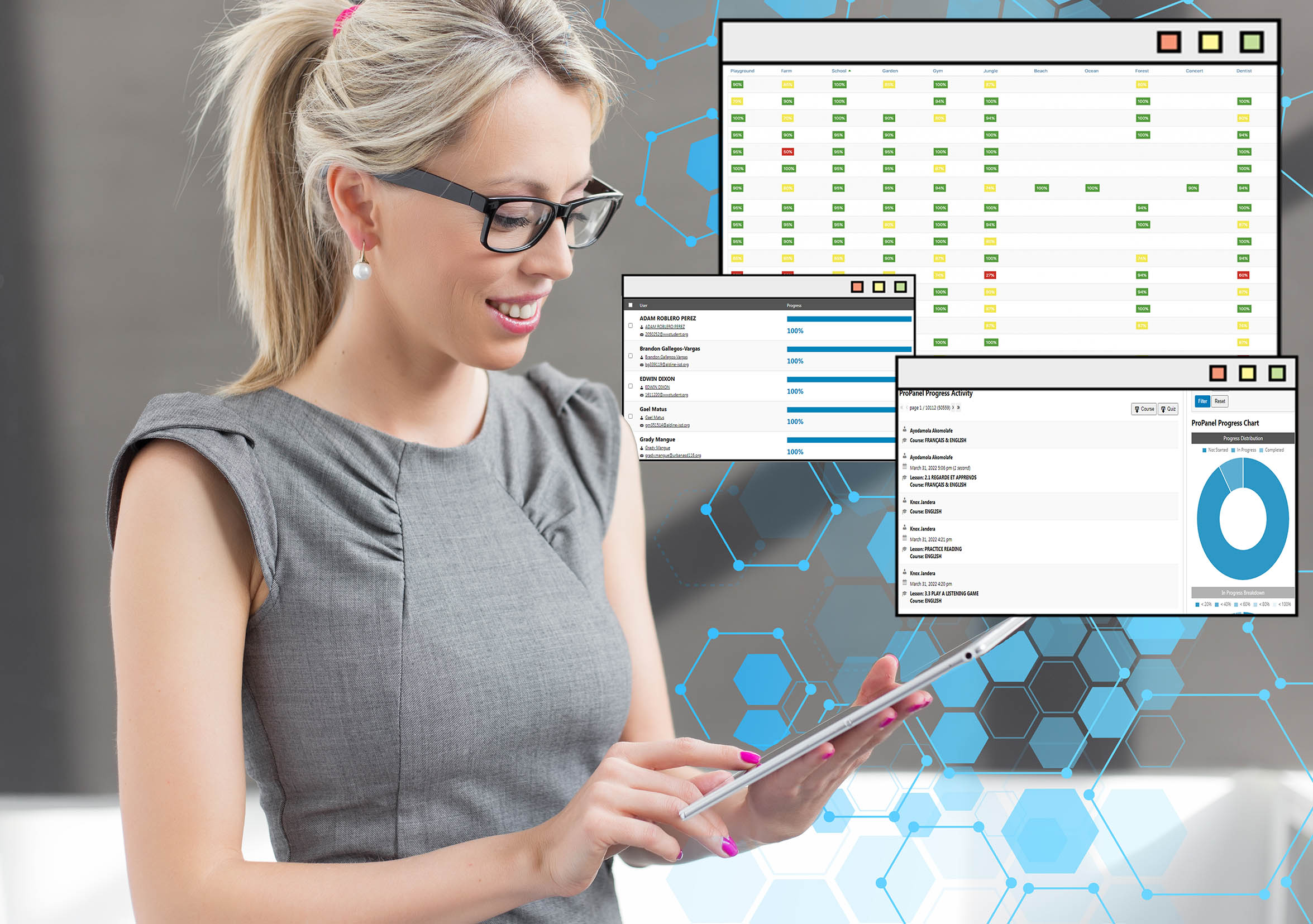
One of the biggest issues that many teachers are facing today is spending way too many hours preparing lessons and keeping up with technology in hopes of engaging students who are often times more tech-savvy than they are. Most administrators don’t realize the huge amount of time it takes to find all the resources to make lessons engaging and interactive enough for young students with short attention spans. Teachers also face enormous pressure to meet deadlines and submit progress reports. It can seem like a daunting task, but it doesn’t have to be thanks to the innovative tools that are already helping teachers and administrators in the most innovative districts across the country.
As the new school year begins, using educational technology is a must! Here are 6 keys to successful EdTech implementation in the early DL/EL classrooms.
1) Use High Quality, Authentic Content
Using video content related to the topics students are learning is a great way to enhance instruction and engage young children. This content should be age appropriate, safe (no ads), non-fiction, and easy to access!
With ready-to-go video-based lessons, the Little Sponges program allows students to express themselves in ways that highlight and accommodate their personal strengths and learning styles.
Little Sponges program covers several topics and vocabulary groups in a way that’s fun and contextually relevant for young children and it leverages the power of real-life videos, bilingual characters, songs, and interactive games to help young children become bilingual.
Content Based Instruction (CBI) is an approach to language instruction that integrates the presentation of topics or tasks from subject-matter classes (e.g. math, social studies) within the context of teaching a second or foreign language.
Crandall and Tucker, 1990
2) Use Assessment Data to Support Learning
Technology-based formative assessments can offer real-time reporting of results, allowing stakeholders to understand students’ strengths and weaknesses, while guiding them to make valid, actionable interpretations of the assessment data. Such assessments can enable educators to see, evaluate, and respond to student work more quickly than can traditional assessments. Similarly, learners and their families can access this information almost in real time. Technology-based summative assessments also facilitate faster turnaround of results. Office of Educational Technology United States Of America
How are you supposed to help someone, get to a location, if you don’t know where they are now? Logically, you must first find out where they are, so you can get them to where they need to be!
Many schools rely on pre and post-assessments in English but it’s not enough. It is better if teachers can get an idea of how each student is doing in both L1 and L2 at any time during the school year. This allows them to adjust lessons or close learning gaps in both languages very quickly. This may seem impossible but it’s totally feasible if you have the right EdTech.

With the Little Sponges program, teachers can gather data using formative and summative assessments that can be used to create personalized digital learning plans. In addition, teachers can use assessment data to inform interventions and decisions about how to engage individual students; personalize learning; and create more engaging, relevant, and accessible learning experiences for all learners.
3) Include Gamified Learning

Students tend to value “fun” within the classroom. A multi-sensory teaching approach can encourage educational fun. The data suggests that “fun” promotes the motivation and engagement of students. Furthermore, it fosters a love of learning among students. (Stoffers, 2011)
Learning can and should be fun! Using technology and learning games in your classroom can help you ensure that students look forward to your class! Gamified learning can also be as simple as creating a beautiful virtual scenery in the forest while students select the correct answers and adding students to pairs or groups to encourage collaboration and teamwork!
Although gamification seems to be a recent trend that started to take flight in 2010, teachers have used small awards, such as stickers, as a motivation booster for many years.
Based on that, EdTech programs like Little Sponges have transformed these game elements into gamification to enhance students’ skills. With Little Sponges, children practice comprehension and reading while they play formative learning games and earn stars ⭐ for answering questions correctly. How does gamification facilitate the learning process? It makes learning fun and interactive, students feel rewarded, they learn how to apply knowledge practically, and it offers real-time feedback. To see an example of one of the Little Sponges’ comprehension games, click here.
4) Take Virtual Field Trips
Children love field trips! Educational technology enables students to take many virtual trips and visit places that they may not have a chance to visit otherwise.
The Little Sponges program allows you to “fly” to Spain, take a walk in the forest, enjoy an international concert, and see beautiful landmarks from the comfort of your classroom.
You can see the breathtaking landscapes of Africa or explore a beautiful coral reef in the ocean. By taking virtual trips, your students learn language and content in context!
5) Facilitate Parent Engagement

According to an NEA policy brief, the evidence of higher student success rates with family engagement “holds true for students at both the elementary and secondary level, regardless of the parent’s education, family income, or background—and the research shows parent involvement affects minority students’ academic achievement across all races.”
Educational technology programs such as Little Sponges are fantastic tools that make it easier than ever for parents to be involved in their child’s education. Because Little Sponges is available for parents to use at home on devices such as computers, tablets, and smartphones, the student will not be leaving their language learning at the school doors. It also provides parent engagement tools such as parent letters and parent training.
Parent involvement in a child's early education is consistently found to be positively associated with a child's academic performance. Specifically, children whose parents are more involved in their education have higher levels of academic performance than children whose parents are involved to a lesser degree.
Hara & Burke, 1998; Hill & Craft, 2003; Marcon, 1999; Stevenson & Baker, 1987
6) Provide Integration with Single Sign-On and LMS Platforms
More schools than ever are using online-based applications in the classroom. These tools are a fantastic way to improve the experience for both students and teachers. However, with each platform requiring a different login, password management can become a real headache.
The solution is to use single sign-on for education software tools. Single sign-on and rostering via tools like Clever and ClassLink makes it each to young children and their families to access learning tools.
The Little Sponges program offers integration with Clever, ClassLink, Google, and Seesaw for easy SSO and rostering. This helps improve security (which is a big concern for schools), increases productivity, and eases the burden on your administrative team. Your teachers and IT teams will have to respond to far fewer support calls when students and teachers sign in using SSO.
Technology is a part of the modern world, and using high quality EdTech tools to enhance what is possible for students does seem to be a bit of a no-brainer.
Take a look at this Little Sponges case study to see how successful you can be utilizing EdTech in your DL/ESOL classroom.

